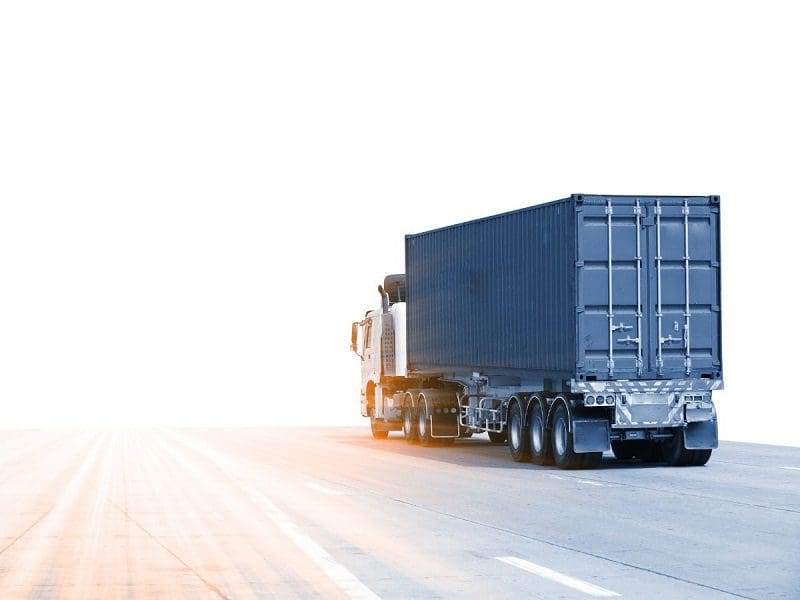Safety in the transport and logistics sector has been under the spotlight in recent years as the transportation of heavy loads poses significant risks for companies in the industry. These risks can include issues related to transport integrity and safety, driver safety and retention, and compliance. External factors such as weather, road conditions, and traffic can also impact these risks. This is where the Chain of Responsibility (CoR) comes in. The Chain of Responsibility legislation falls within the Heavy Vehicle National Law (HVNL) and holds all parties involved in heavy vehicle operations; from the business that employs the driver to the vehicle operators, schedulers, loading and unloading operators, consignors, consignees, and packers – they each hold a level of accountability and responsibility for their actions. The objective of these changes back in 2018 was to strengthen the health and safety standards of the Heavy Vehicle National Law (HVNL) and align them with the Work Health and Safety Act.
Business Liability and Risk
Non-compliance with the Chain of Responsibility regulations can result in both financial and non-financial penalties, including significant fines. An individual may face a fine of up to 3,000 penalty units ($431,250) for a breach of the primary duty of care and officer liability provisions, while a corporation may be fined up to 30,000 penalty units ($4,312,500) in cases of reckless conduct. With hefty fines for those who fail to follow the correct chain of responsibility, this can be detrimental to a business or person and highlights the need for conducting a Risk and Hazard Assessment in all workplaces, but especially in industries such as industrial, transportation and storage. But there are ways to ensure that you, your staff and your equipment meet these standards.
Taking A Proactive Approach
Previously, legal action could only be taken against parties within the supply chain after an incident occurred, such as a speeding offense, road traffic accident, or weights and loads violation. However, the legal duty has now shifted from being reactive and requiring an incident to being proactive. This means that parties in the supply chain can now be held accountable for violations of the law even if no incident occurs.
This change makes the law similar to Work Health and Safety laws, where employers are responsible for employee safety and can be held liable regardless of whether an injury has occurred or not. The legal duty of responsibility extends to the highest level of management within a company, meaning that even top executives who may not be directly involved in day-to-day decisions still have a responsibility for oversight of those decisions.
Factoring Weight, Speed and Measurement
Heavy goods transport vehicles must meet certain specifications for size, weight, and maximum speed. It is the responsibility of the parties within the Chain of Responsibility to ensure that the vehicle and cargo comply with these guidelines. Additionally, there are regulations in place to prevent driver fatigue. These regulations prohibit extended working hours that may lead to fatigue while on the road. The responsibility for compliance with these regulations may fall on route planners, schedule setters, or staff and executives responsible for setting working hours in the contract.
Mitigate The Risk With The Right Products
To mitigate these risks and ensure compliance with Chain of Responsibility regulations, transport companies are encouraged to implement compliant systems such as steel pallets and adaptive transport frames or cages. At Bremco we have a range of crane lifting attachments, stillages and pallet cages that can be purchased off the shelf or custom made to suit your exact requirements. For example, a large goods cage, also known as a crane lift, is designed to safely lift up to 2 tonnes of large or awkward products. Using a lifting cage can expand the capabilities of your lifting equipment and enhance the performance of your materials handling systems. The appropriate crane cage for lifting can increase efficiency, improve safety, and decrease the reliance on manual labor.
Another product example that can improve CoR is our heavy duty freight cages which can be designed and custom manufactured to included several specific features:
- Increased thickness of the square tubing
- Additional pre-galvanized steel checkerplate floors to save costs
- Heavier duty square tubing called “Allgal” made by Orrcon Steel
- Customized cages to fit in the front compartment of a B-Double trailer system with a specific size of H 2400mm x W 1710mm x D 2310mm
- Gates installed with a 270-degree opening hinge for easy access
- Completion of the design, manufacture, and delivery of these custom heavy-duty freight cages in under three weeks after receiving approval for the prototype design from the client
To stay compliant with current regulations, it’s important to have systems and procedures in place that meet both your Work Health and Safety (WHS) and Chain of Responsibility (CoR) obligations under the Heavy Vehicle National Law (HVNL). The good news is that many of the systems used to fulfill WHS requirements can also be used to meet your CoR obligations. Conserve can assist with this by streamlining the process and ensuring compliance in both areas.





